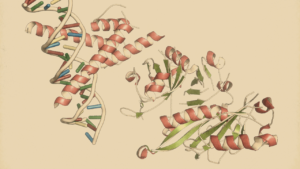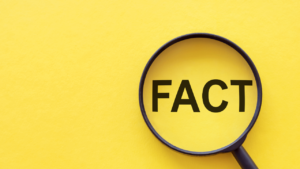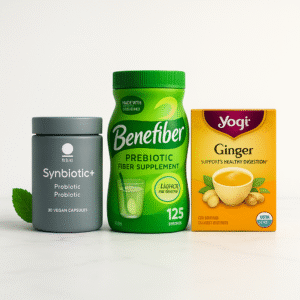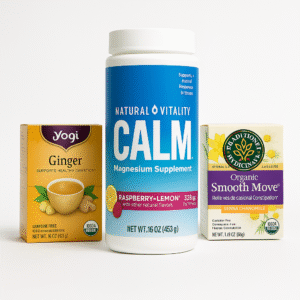Healing Benefits of Spring Forest Qigong Exercises
Learn the ancient Chinese practice of spring forest qigong with and experience the physical, mental and spiritual benefits it has to offer.

Learn the ancient Chinese practice of Spring Forest Qigong and experience the physical, mental, and spiritual benefits it has to offer.
Qigong, also known as "chi gong,"is an ancient Chinese practice that originated as a part of traditional Chinese medicine 9, 10, 11. This practice uses exercises to improve and maintain health and well-being by optimizing energy in the body, mind, and spirit 1.
Qigong is practice that are good for the body and are becoming more popular in the United States as holistic ways to improve health 2.
Lauche and colleagues found that around 7.38 million adults in the United States practice Tai chi or qigong every day 16.
Qi is a type of energy that moves through channels in the body, and Gong refers to practicing or developing skills 12.
Qigong is currently defined in a book called "Traditional Chinese Medicine Qigong" by T. J. Liu and W. C. Zhang, as" Qigong is the skill of body-mind exercise that integrates the three adjustments of body, breath, and mind into “one” 13.
Qigong is a practice that involves controlling the mind, breath, and body's movement and posture. It has both physical and psychological benefits 1, 3.
In most forms of qigong:
- Breathing is slow, deep, and may involve making sounds while speaking. The way of breathing may change from using the belly to using both the chest and belly.
- The movements are usually calm and easy, meant to help you relax.
- Controlling the mind involves concentrating and imagining.
Practicing Qigong is a great way to keep yourself healthy 17.
Qigong has been practiced for a long time and now there are many different types and forms available. Some of the most popular ones are Wuqinxi, Baduanjin, Yi Jin Jing, Liu Zi Jue, and Ma Wang Dui Dao Yin Shu 15.
It is not only practiced by healthy individuals but also by patients in different healthcare settings. Healthcare providers use it as an alternative treatment for patients with various health conditions 19, 20.
What Is Spring Forrest Qigong (SFQ)?
Spring Forest Qigong is a form of Qigong. It teaches people how to use Qigong techniques, meditation, and healthy food to heal themselves and others and live a healthy life.
Chunyi Lin, who learned different qigong methods in his youth in China, introduced his uncomplicated SFQ technique in the US in 1995 4.
SFQ involves meditation and movement (gong) to cultivate, harvest, and store energy (qi). It has both internal and external impacts.
You can either do the exercises and meditation on your own (internal), or get help from an SFQ Master Healer who can send you healing energy (external).
A Master Healer is someone who has learned extensively from Master Lin and has been certified by him based on their level of expertise in SFQ.
Lin’s vision, “A healer in every family and a world without pain,” promotes SFQ for its simplicity and effectiveness 5
He thinks that everyone can gain from doing SFQ, so he's dedicated to teaching and spreading his beliefs.
Can SFQ Help Reduce Chronic Pain?
Spring Forest Qigong can help people who feel like they have long-lasting physical pain or emotional problems take care of themselves better 6.
SFQ for 12 weeks can reduce neuropathic pain in adults with spinal cord injury and improve mood, body awareness, and functional performance, while reducing spasms frequency and severity according to a 2022 research 7.
23 adults with spinal cord injury-related neuropathic pain, practiced SFQ for 12 weeks and reported significant reductions in pain intensity, spasm frequency, and severity, and reduced interference on mood and sleep 8.
Spring Forest Qigong vs Qigong
Spring Forest Qigong is a type of Qigong created by Master Chunyi Lin that is easy to practice and suitable for people of all ages and physical abilities.
Qigong is a traditional Chinese practice that involves coordinated body movements, breathing, and meditation for health, spirituality, and martial arts training.
There are many benefits to practicing qigong, including those specific to Spring Forest Qigong.
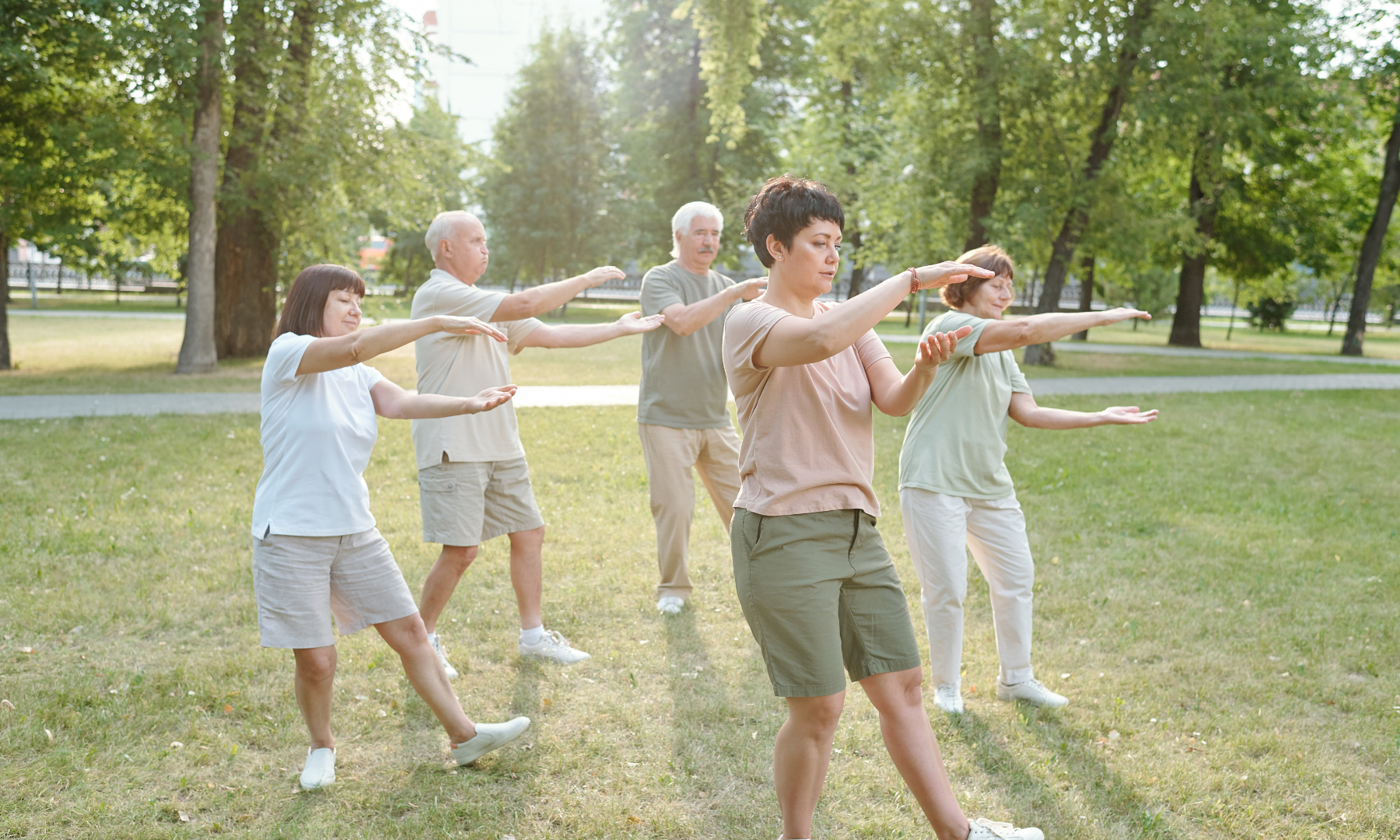
How Effective Is Qigong in Reducing Depression?
More and more research is being conducted to explore how practicing qigong can impact depression 14.
A different review highlights the mental advantages of qigong and proposes that it can help decrease stress and anxiety in healthy adults 18.
Qigong has been found to be effective in reducing depression symptoms according to a recent review 21.
A 2016-study was conducted on college students with mild depression. They were divided into two groups, one practicing Wuqinxi (a form of qigong) while the other group did not change their lifestyle.
The study found that practicing Wuqinxi helped to reduce depression in the students by improving certain metabolic indexes in the brain 38.
Ways In Which Qigong May Help With Depression
Neuroendocrine: The Hypothalamic–Pituitary–Adrenal Axis
In five studies, saliva samples were collected, and in one study, a urine sample was collected to analyze cortisol.
Three of the studies found that the experimental group had lower cortisol levels than the control group after the study. Two of the studies showed that depression was significantly reduced in the qigong group compared to before the study 22, 23, 24.
In contrast, three studies did not find any significant difference in cortisol levels between groups during all the assessment time points 25, 26.
Neuroendocrine: Renin–Angiotensin System
Cheung et al. found that there was no significant difference in aldosterone levels between the two groups. However, renin levels decreased significantly in both the experimental and control groups 25.
Immune System
Chan et al. found that the qigong group had a significant increase in IgA levels during both midpoint and post-assessments compared to before the study 23.
Can Qigong Help Older Adults?
Around 18 million people who are 65 years old or older have difficulty with their physical abilities 27.
52% said they had difficulty with walking, holding, carrying, or pushing 28; 75.3% of people had trouble with their balance, and the number went up to 89% for those who were over 80 years old 29.
Qigong has been suggested as a safe option for older adults with chronic conditions, physical limitations or low levels of activity 30, 31.
Qigong practice can help older people by making their muscles stronger, improving their balance, and preventing falls. It also increases flexibility and endurance 32, 33.
Practicing Qigong can help improve the mental health and well-being of older people by reducing depression symptoms 34, comparable to aerobic exercise 35.
Qigong exercise is gentle, but it still has moderate-intensity aerobic effects that affect the heart and lungs 36, 37.
Can Qigong Help with Osteoporosis (OA)?
Two studies were conducted by Shen et al. to investigate the benefits of practicing Wuqinxi on elderly patients with senile osteoporosis 38.
The first study involved 200 patients who were randomly assigned to either a Wuqinxi group or a control group.
After 24 weeks, the bone mineral density (BMD) of the lumbar vertebrae in the Wuqinxi group was significantly higher and the low back pain scores were lower than in the control group.
The second study compared the effects of Wuqinxi with drug therapy on bone metabolism and low back pain in 200 elderly patients with senile osteoporosis 39.
After the intervention, practicing Wuqinxi was found to be positive for bone metabolism and effective in relieving low back pain.
Overall, practicing Wuqinxi may help prevent and treat primary osteoporosis and can be done in communities.
Can Qigong Alleviate Knee Osteoarthritis (KOA) Symptoms?
Two studies looked at the benefits of Wuqinxi exercise for female middle-aged and elderly patients with knee osteoarthritis 40.
The exercises improved balance, reduced the risk of falls, and relieved pain and stiffness.
One study found that Wuqinxi was better than another type of exercise called Zhanzhuang 41.
What Qigong Exercises Help Metabolic Syndrome?
Liu et al. conducted a study on the effects of Wuqinxi exercise on elderly patients with metabolic syndrome 42.
The study showed that after 24 weeks of practicing the exercise, the patients' vascular risk factors and cognitive function improved.
Can Qigong Improve Cognition and Memory?
Three studies investigated how practicing the Wuqinxi exercise affects cognitive function in middle-aged and elderly individuals 43, 44, 45.
The studies found that practicing Wuqinxi improved attention concentration ability and overall cognitive function in this population.
One study used a simplified version of a graphic reasoning test and a cancellation test to evaluate cognitive function after at least two years of practicing Wuqinxi for four 30-minute sessions per week 45.
The results showed that Wuqinxi had a positive effect on cognitive function in middle-aged and elderly individuals.
The Bottom Line
Qigong is a Chinese practice that uses exercises to improve health by optimizing energy in the body, mind, and spirit.
Spring Forest Qigong teaches people how to use Qigong techniques, meditation, and healthy food to heal themselves and others and live healthy life.
SFQ can help adults with spinal cord injury-related neuropathic pain by reducing pain intensity, spasm frequency, and severity, and improving mood and body awareness after practicing for 12 weeks.
Qigong may help with depression by reducing stress and anxiety, according to research.
Qigong can reduce cortisol and increase IgA, which may help with depression.
Qigong helps seniors with physical limitations by strengthening muscles, improving balance, and preventing falls. It also enhances flexibility, endurance, and mental health.
Practicing Wuqinxi (a form of qigong) can help elderly patients with osteoporosis, knee osteoarthritis, overall cognitive function and memory function.
Frequently Asked Questions
How does Spring Forest Qigong work?
Is Spring Forest Qigong suitable for everyone?
Can Spring Forest Qigong be practiced at home?
How often should I practice Spring Forest Qigong?
References
Fitnature uses only high-quality sources, including peer-reviewed studies, to support the facts within our articles. Read our editorial process to learn more about how we fact-check and keep our content accurate, reliable, and trustworthy.
- (CDC), Centers for Disease Control and Prevention. “Prevalence and Most Common Causes of Disability among Adults–United States, 2005 – PubMed.” MMWR. Morbidity and Mortality Weekly Report, vol. 58, no. 16, May 2009.
- Chan, Cecilia Lai-Wan, et al. “A Systematic Review of the Effectiveness of Qigong Exercise in Cardiac Rehabilitation.” The American Journal of Chinese Medicine, vol. 40, no. 02, Jan. 2012, pp. 255–67, https://doi.org/10.1142/s0192415x12500206.
- Chan, Ee Suen, et al. “Biochemical and Psychometric Evaluation of Self-Healing Qigong as a Stress Reduction Tool among First Year Nursing and Midwifery Students.” Complementary Therapies in Clinical Practice, vol. 19, no. 4, Nov. 2013, pp. 179–83, https://doi.org/10.1016/j.ctcp.2013.08.001.
- Chang, Pei-Shiun, et al. “Physical and Psychological Effects of Qigong Exercise in Community-Dwelling Older Adults: An Exploratory Study.” Geriatric Nursing, vol. 39, no. 1, Jan. 2018, pp. 88–94, https://doi.org/10.1016/j.gerinurse.2017.07.004.
- Chen, Zhen, et al. “Qigong Improves Quality of Life in Women Undergoing Radiotherapy for Breast Cancer.” Cancer, vol. 119, no. 9, pp. 1690–98, https://doi.org/10.1002/cncr.27904. Accessed 12 Apr. 2023.
- Cheng, Xiang, et al. “[Health Qigong Wuqinxi Improves Hydrogen Proton Magnetic Resonance Spectra in Prefrontal Cortex and Hippocampus in College Students with Mild Depression] – PubMed.” Nan Fang Yi Ke Da Xue Xue Bao = Journal of Southern Medical University, vol. 36, no. 11, Nov. 2016.
- Cheung, et al. “Randomised Controlled Trial of Qigong in the Treatment of Mild Essential Hypertension.” Journal of Human Hypertension, vol. 19, no. 9, May 2005, pp. 697–704, https://doi.org/10.1038/sj.jhh.1001884.
- Chinese Medical Qigong. https://books.google.com.vn/books/about/Chinese_Medical_Qigong.html?id=anlyarISmyAC&redir_esc=y. Accessed 12 Apr. 2023.
- Chow, et al. “The Effects of Qigong on Reducing Stress and Anxiety and Enhancing Body–Mind Well-Being.” Mindfulness, vol. 3, no. 1, Oct. 2011, pp. 51–59, https://doi.org/10.1007/s12671-011-0080-3.
- Coleman, Jane F. “Spring Forest Qigong and Chronic Pain.” Journal of Holistic Nursing, vol. 29, no. 2, Nov. 2010, pp. 118–28, https://doi.org/10.1177/0898010110385939.
- Dillon, Charles F., et al. “Vision, Hearing, Balance, and Sensory Impairment in Americans Aged 70 Years and Over: United States, 1999-2006.” PsycEXTRA Dataset, 2010, https://doi.org/10.1037/e665372010-001.
- Ernst, Edzard, et al. Oxford Handbook of Complementary Medicine. 2008, https://academic.oup.com/book/25061. Accessed 12 Apr. 2023.
- FTO. https://chemport-n.cas.org//chemport-n/?APP=ftslink&action=reflink&origin=npg&version=1.0&coi=1%3ACAS%3A528%3ADC%2BC2MXhtVajsLnF&md5=d2e745d8df60c4d6428e5e032ff2f665. Accessed 12 Apr. 2023.
- Guo, Yucheng, et al. “Health Benefits of Traditional Chinese Sports and Physical Activity for Older Adults: A Systematic Review of Evidence.” Journal of Sport and Health Science, vol. 5, no. 3, Sept. 2016, pp. 270–80, https://doi.org/10.1016/j.jshs.2016.07.002.
- Haiming, L. Correlation Research on Effect of Wuqinxi Exercise on Cognitive Function in Old People With Metabolic Syndrome. Accessed 12 Apr. 2023.
- Horowitz, Sala. “Evidence-Based Health Benefits of Qigong.” Alternative and Complementary Therapies, 21 Aug. 2009, https://www.liebertpub.com/doi/10.1089/act.2009.15401. Accessed 12 Apr. 2023.
- Hsieh, Chia-Jung, et al. “Empirical Study of the Influence of a Laughing Qigong Program on Long-Term Care Residents.” Geriatrics & Gerontology International, vol. 15, no. 2, Feb. 2014, pp. 165–73, https://doi.org/10.1111/ggi.12244.
- Jahnke, Roger, et al. “A Comprehensive Review of Health Benefits of Qigong and Tai Chi.” American Journal of Health Promotion, vol. 24, no. 6, July 2010, pp. e1–25, https://doi.org/10.4278/ajhp.081013-lit-248.
- Klein, et al. “Qigong in Cancer Care: A Systematic Review and Construct Analysis of Effective Qigong Therapy.” Supportive Care in Cancer, vol. 24, no. 7, Apr. 2016, pp. 3209–22, https://doi.org/10.1007/s00520-016-3201-7.
- Klein, Penelope, et al. “Meditative Movement, Energetic, and Physical Analyses of Three Qigong Exercises: Unification of Eastern and Western Mechanistic Exercise Theory.” Medicines, vol. 4, no. 4, Sept. 2017, https://doi.org/10.3390/medicines4040069.
- Lan, Ching, et al. “The Aerobic Capacity and Ventilatory Efficiency during Exercise in Qigong and Tai Chi Chuan Practitioners – PubMed.” The American Journal of Chinese Medicine, vol. 32, no. 1, Jan. 2004, https://doi.org/10.1142/S0192415X04001734.
- Lauche, Romy, et al. “Prevalence, Patterns, and Predictors of T’ai Chi and Qigong Use in the United States: Results of a Nationally Representative Survey.” The Journal of Alternative and Complementary Medicine, vol. 22, no. 4, Apr. 2016, pp. 336–42, https://doi.org/10.1089/acm.2015.0356.
- Liang, L. P. “Effects of Various Traditional Health Sports on Psychological and Immune Functions of Middle Aged and Elderly People.” Chinese Journal of Gerontology, no. 38(2), 2018, pp. 418–20.
- Liu, Xin, et al. “A Systematic Review and Meta-Analysis of the Effects of Qigong and Tai Chi for Depressive Symptoms.” Complementary Therapies in Medicine, vol. 23, no. 4, Aug. 2015, pp. 516–34, https://doi.org/10.1016/j.ctim.2015.05.001.
- Maorong, Shen, et al. “Effect of HUA Tuo’s Frolics of Five Animals on the Patients with Senile Osteoporosis.” Zhonghua Zhongyiyao Zazhi, vol. 29, no. 3, pp. 895–97. Accessed 12 Apr. 2023.
- Ng, Bobby H. P., and Hector W. H. Tsang. “Psychophysiological Outcomes of Health Qigong for Chronic Conditions: A Systematic Review.” Psychophysiology, vol. 46, no. 2, pp. 257–69, https://doi.org/10.1111/j.1469-8986.2008.00763.x. Accessed 12 Apr. 2023.
- Oh, B., et al. “Impact of Medical Qigong on Quality of Life, Fatigue, Mood and Inflammation in Cancer Patients: A Randomized Controlled Trial.” Annals of Oncology, vol. 21, no. 3, Mar. 2010, pp. 608–14, https://doi.org/10.1093/annonc/mdp479.
- Pin, Tu. Effect of Wuqinxi and Zhanzhuang on Knee Flexor and Extensor Strength and WOMAC Scores of Female Patients with KOA. Accessed 12 Apr. 2023.
- Prevalence and Most Common Causes of Disability Among Adults — United States, 2005. https://www.cdc.gov/mmwr/preview/mmwrhtml/mm5816a2.htm. Accessed 12 Apr. 2023.
- “Qigong for Hypertension: A Systematic Review : Medicine.” LWW, https://journals.lww.com/md-journal/Fulltext/2015/01010/Qigong_for_Hypertension__A_Systematic_Review.18.aspx. Accessed 12 Apr. 2023.
- “Qigong Practice: A Pathway to Health and Healing : Holistic Nursing Practice.” LWW, https://journals.lww.com/hnpjournal/Abstract/2003/03000/Qigong_Practice__A_Pathway_to_Health_and_Healing.6.aspx. Accessed 12 Apr. 2023.
- “Qigong: What You Need To Know.” NCCIH, https://www.nccih.nih.gov/health/qigong-what-you-need-to-know. Accessed 12 Apr. 2023.
- Rogers, Carol E., et al. “A Review of Clinical Trials of Tai Chi and Qigong in Older Adults.” Western Journal of Nursing Research, vol. 31, no. 2, Aug. 2008, pp. 245–79, https://doi.org/10.1177/0193945908327529.
- Taylor-Piliae, Ruth E. “The Effectiveness of Tai Chi Exercise in Improving Aerobic Capacity: An Updated Meta-Analysis – PubMed.” Medicine and Sport Science, vol. 52, Jan. 2008, https://doi.org/10.1159/000134283.
- “The Effect of Tai Chi and Qigong Practice on Depression and Anxiety Symptoms: A Systematic Review and Meta-Regression Analysis of Randomized Controlled Trials.” Mental Health and Physical Activity, vol. 7, no. 3, pp. 135–46, https://doi.org/10.1016/j.mhpa.2014.08.001. Accessed 12 Apr. 2023.
- Tsang, Hector W. H., et al. “Qigong as a Psychosocial Intervention for Depressed Elderly with Chronic Physical Illnesses.” International Journal of Geriatric Psychiatry, vol. 17, no. 12, pp. 1146–54, https://doi.org/10.1002/gps.739. Accessed 12 Apr. 2023.
- Tu, P., & Liao, Y. P. “Effect of Wuqinxi and Zhanzhuang on Knee Flexor and Extensor Strength and WOMAC Scores of Female Patients with KOA.” J Chengdu Sport Univ, no. 40, 2014, pp. 68–84.
- User, Super. “Spring Forest Qigong.” Home, https://www.springforestqigong.com/. Accessed 12 Apr. 2023.
- Van de Winckel, Ann, Sydney T. Carpentier, et al. Using Remotely Delivered Spring Forest QigongTM to Reduce Neuropathic Pain in Adults with Spinal Cord Injury: A Non-Randomized Controlled Trial. Cold Spring Harbor Laboratory, 15 Feb. 2023, http://dx.doi.org/10.1101/2023.02.11.23285793. Accessed 12 Apr. 2023.
- Van de Winckel, Ann, Sydney Carpentier, et al. Using Remotely Delivered Spring Forest QigongTM to Reduce Neuropathic Pain in Adults with Spinal Cord Injury: Protocol of a Quasi-Experimental Clinical Trial. Cold Spring Harbor Laboratory, 12 Mar. 2022, http://dx.doi.org/10.1101/2022.03.09.22271844. Accessed 12 Apr. 2023.
- Wang, et al. “Managing Stress and Anxiety through Qigong Exercise in Healthy Adults: A Systematic Review and Meta-Analysis of Randomized Controlled Trials.” BMC Complementary and Alternative Medicine, vol. 14, no. 1, Jan. 2014, pp. 1–9, https://doi.org/10.1186/1472-6882-14-8.
- Wang, Chong-Wen, et al. “The Effect of Qigong on Depressive and Anxiety Symptoms: A Systematic Review and Meta-Analysis of Randomized Controlled Trials.” Evidence-Based Complementary and Alternative Medicine : eCAM, vol. 2013, 2013, p. 716094, https://doi.org/10.1155/2013/716094.
- Wei-min, Liu. “The Effects of Practicing ‘Health Qigong·WuQinxi’ for 6 Months on Middle-Aged and Elderly People’s Ability of Focusing Attention.” Journal of Beijing Sport University. Accessed 12 Apr. 2023.
- Wu, J. D., Yu, D. H., & Wu, H. Q. “Analysis of Effects of New Wuqinxi Style on Exercisers.” Journal of Shang Hai Phy Sical Educatio N Institute, no. 27(2), 2003, pp. 59–63.
- Xiao, Zhigang, and Gang Li. “The Effect of Wuqinxi Exercises on the Balance Function and Subjective Quality of Life in Elderly, Female Knee Osteoarthritis Patients.” American Journal of Translational Research, vol. 13, no. 6, Jan. 2021.
- Ye, Jiajia, et al. “The Neuroscience of Nonpharmacological Traditional Chinese Therapy (NTCT) for Major Depressive Disorder: A Systematic Review and Meta-Analysis.” Evidence-Based Complementary and Alternative Medicine, vol. 2019, May 2019, https://doi.org/https://doi.org/10.1155/2019/2183403.
Review date not set.
How we reviewed this article:
Latest on:
